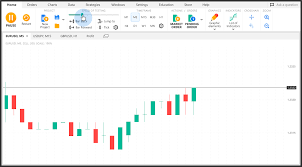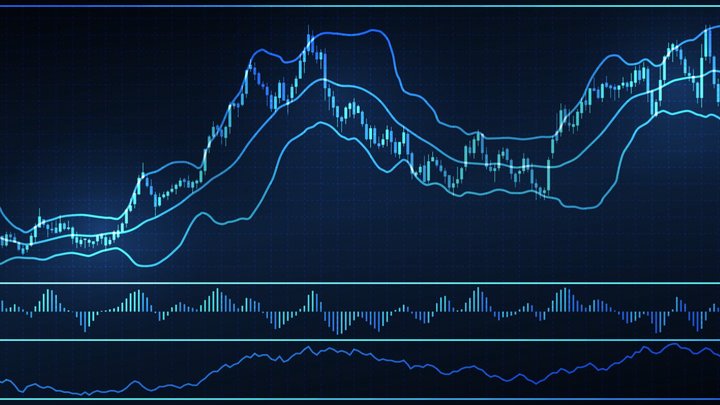
If you are a beginner forex trader, there are some things you should keep in mind. First and foremost, ensure that your broker is properly regulated. A well-regulated broker will lower your risk and ensure your safety. Also, start off with a demo account or cent account so that you can see the basics first. Keep in mind that you don't need to deposit large amounts of money right away. While bonuses and other freebies might look appealing, you should first make a minimum deposit.
Logikfx's 101 Course in Forex Trading
Logikfx is the name of an online currency trading school. Logikfx is a paid course, but it focuses on the basics. Its videos are easy to understand thanks to the use of guided annotations, and a quiz creator application. It's a fun way to learn in an engaging environment without boring lectures.

Leverage
Professional traders often refer to leverage as a two-edged sword. It can prove to be very beneficial when done correctly, but it can also make you more miserable. Before they invest their money, beginners should be able to understand leverage. Learning how to use leverage properly is important before you start trading. This will allow you to maximize your profits while taking minimal risk. This guide will help to get you started in forex trading.
Popular currency pairs
The two most common currency pairs in forex trading include EUR/USD/CHF. These pairs are highly correlated but also have the lowest volatility. These two pairs do have differences. EUR/USD offers relatively low spreads. It is also popular among beginners due to its liquidity and few fluctuations. USD/CHF are another popular currency pair. The Swiss franc is known as the swiss franc and has a negative correlation with EUR/USD/CHF.
News headlines
Although traders rely heavily on economic data for their decision making, news headlines can also be an important source of information. Market sentiment can be affected if important trends or events occur in the economy. The stock of a social media firm that announces a decline in users is likely to drop. Investment banks are focused on trading revenue and they use economic data for their own decisions.

Creating a trading plan
A trading plan is essential to a successful Forex trading profession. The plan will help you understand how trading fits in your daily life and establish your goals for your trading career. It is essential to have a plan in place so you can avoid making rash decisions or missing out on profitable trades. A trading plan will also help you organize your research and find trading statistics. A trading plan will also help you control your emotions and make better decisions when a trade doesn't go as planned.
FAQ
What is security in the stock market?
Security is an asset that generates income for its owner. Shares in companies is the most common form of security.
There are many types of securities that a company can issue, such as common stocks, preferred stocks and bonds.
The value of a share depends on the earnings per share (EPS) and dividends the company pays.
If you purchase shares, you become a shareholder in the business. You also have a right to future profits. If the company pays you a dividend, it will pay you money.
Your shares may be sold at anytime.
How does inflation affect the stock market?
Inflation has an impact on the stock market as investors have to spend less dollars each year in order to purchase goods and services. As prices rise, stocks fall. Stocks fall as a result.
What is a Stock Exchange and How Does It Work?
A stock exchange is where companies go to sell shares of their company. This allows investors to purchase shares in the company. The market decides the share price. It is often determined by how much people are willing pay for the company.
Investors can also make money by investing in the stock exchange. To help companies grow, investors invest money. This is done by purchasing shares in the company. Companies use their funds to fund projects and expand their business.
There are many kinds of shares that can be traded on a stock exchange. Some are known simply as ordinary shares. These shares are the most widely traded. These shares can be bought and sold on the open market. Prices of shares are determined based on supply and demande.
Preferred shares and bonds are two types of shares. Priority is given to preferred shares over other shares when dividends have been paid. Debt securities are bonds issued by the company which must be repaid.
What is the difference in the stock and securities markets?
The entire list of companies listed on a stock exchange to trade shares is known as the securities market. This includes stocks, bonds, options, futures contracts, and other financial instruments. There are two types of stock markets: primary and secondary. The NYSE (New York Stock Exchange), and NASDAQ (National Association of Securities Dealers Automated Quotations) are examples of large stock markets. Secondary stock exchanges are smaller ones where investors can trade privately. These include OTC Bulletin Board Over-the-Counter (Pink Sheets) and Nasdaq ShortCap Market.
Stock markets have a lot of importance because they offer a place for people to buy and trade shares of businesses. The price at which shares are traded determines their value. A company issues new shares to the public whenever it goes public. Investors who purchase these newly issued shares receive dividends. Dividends are payments made by a corporation to shareholders.
Stock markets provide buyers and sellers with a platform, as well as being a means of corporate governance. Shareholders elect boards of directors that oversee management. Boards ensure that managers use ethical business practices. The government can replace a board that fails to fulfill this role if it is not performing.
What is a REIT and what are its benefits?
A real estate investment trust (REIT) is an entity that owns income-producing properties such as apartment buildings, shopping centers, office buildings, hotels, industrial parks, etc. These companies are publicly traded and pay dividends to shareholders, instead of paying corporate tax.
They are similar in nature to corporations except that they do not own any goods but property.
Statistics
- For instance, an individual or entity that owns 100,000 shares of a company with one million outstanding shares would have a 10% ownership stake. (investopedia.com)
- "If all of your money's in one stock, you could potentially lose 50% of it overnight," Moore says. (nerdwallet.com)
- The S&P 500 has grown about 10.5% per year since its establishment in the 1920s. (investopedia.com)
- Even if you find talent for trading stocks, allocating more than 10% of your portfolio to an individual stock can expose your savings to too much volatility. (nerdwallet.com)
External Links
How To
How to Trade in Stock Market
Stock trading is a process of buying and selling stocks, bonds, commodities, currencies, derivatives, etc. Trading is a French word that means "buys and sells". Traders trade securities to make money. They do this by buying and selling them. It is one of oldest forms of financial investing.
There are many ways to invest in the stock market. There are three basic types: active, passive and hybrid. Passive investors simply watch their investments grow. Actively traded traders try to find winning companies and earn money. Hybrids combine the best of both approaches.
Passive investing can be done by index funds that track large indices like S&P 500 and Dow Jones Industrial Average. This type of investing is very popular as it allows you the opportunity to reap the benefits and not have to worry about the risks. Just sit back and allow your investments to work for you.
Active investing involves picking specific companies and analyzing their performance. An active investor will examine things like earnings growth and return on equity. They decide whether or not they want to invest in shares of the company. If they feel that the company's value is low, they will buy shares hoping that it goes up. They will wait for the price of the stock to fall if they believe the company has too much value.
Hybrid investing combines some aspects of both passive and active investing. One example is that you may want to select a fund which tracks many stocks, but you also want the option to choose from several companies. In this case, you would put part of your portfolio into a passively managed fund and another part into a collection of actively managed funds.